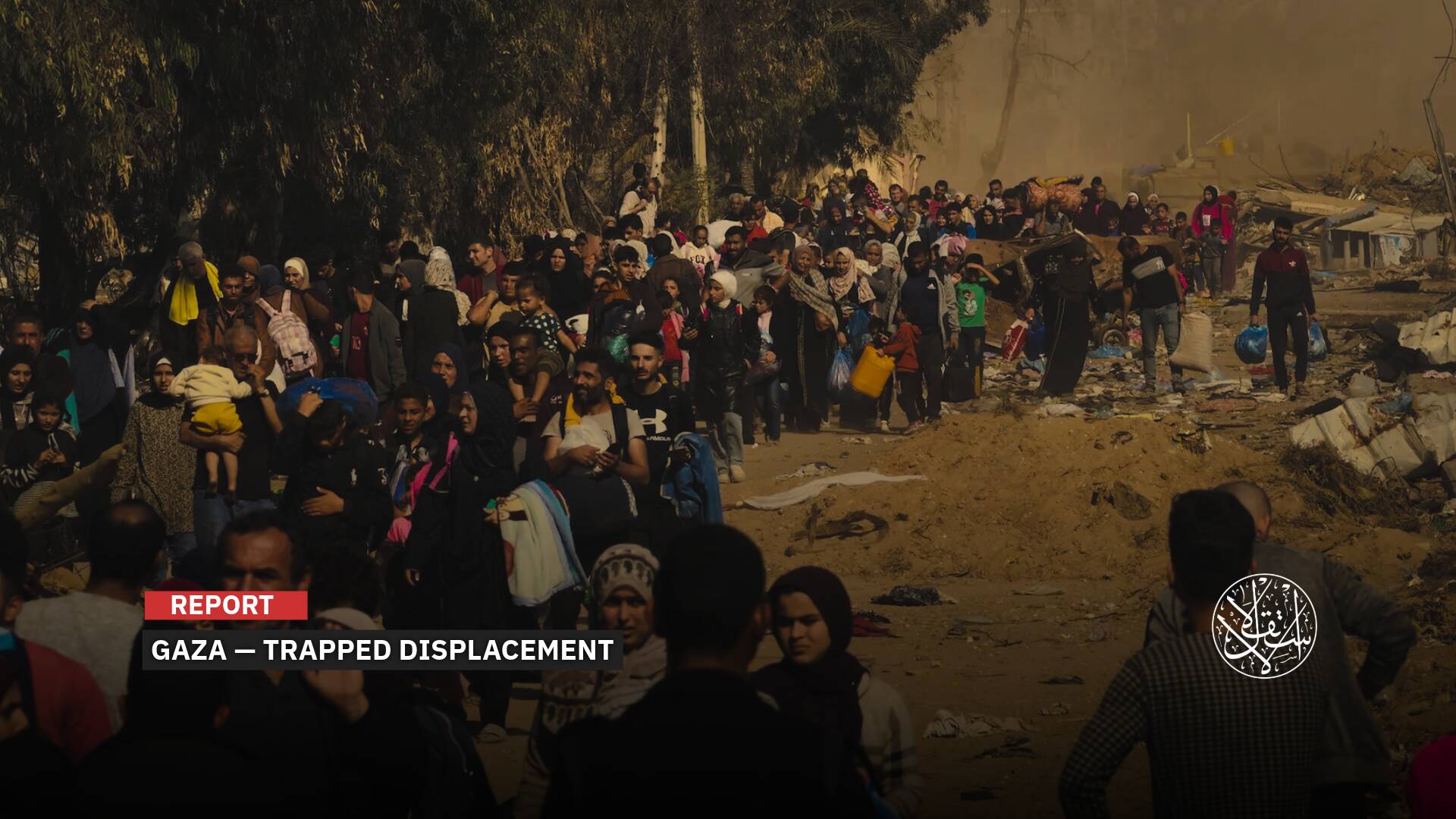A New Health Pandemic: Is the World Ready to Confront Monkeypox?

“Sweden recently confirmed its first case of mpox, marking the first time it has been found outside Africa.”
Several months ago, the World Health Organization Director-General Tedros Adhanom Ghebreyesus issued a new warning about the possibility of an outbreak of ‘Disease X’, which scientists said could be 20 times more deadly than COVID-19.
He said he had given a similar warning in 2018 about the possibility of a pandemic, and he was proven right with the outbreak of the Coronavirus.
He also complained that the world was still not prepared for a new pandemic, and again promoted the urgent need to reach and sign a global treaty to prepare for the next one, describing the treaty as a critical task for humanity.
Last June, a report prepared by an independent committee that provides recommendations to the WHO issued a warning that the world was not prepared to prevent future pandemics, urging leaders and officials around the world to act quickly.
The report stressed that after more than four years of the COVID-19 pandemic, politicians are acting negligently by not allocating enough money or effort to avoid a repeat of the disaster.
Emphasizing the potential threat, the report cited research models indicating that there is a one-in-two chance that the world will face a pandemic the size of Coronavirus in the next 25 years.
Currently, the WHO has identified what the next pandemic will be, indicating that there is a risk that the monkeypox (mpox) disease may spread again globally after its spread in 2022 and become a health risk in a number of countries.
The main concern for the WHO is related to a new clade of the virus that was discovered in late 2023 in the eastern Democratic Republic of the Congo (DRC).
Sweden has also announced that it had found the first case of a new form of Mpox previously only seen in Africa in a traveler, while other countries warned more imported cases were likely.
Monkeypox
On August 14, the WHO declared mpox a public health emergency of international concern (PHEIC) for the second time in two years, following the spread of the viral pandemic from the DRC to neighboring countries.
WHO Director-General Ghebreyesus said the organization would set up an emergency committee to discuss the spread of a dangerous clade of mpox in sub-Saharan Africa.
Burundi, Kenya, Rwanda, and Uganda have all reported their first-ever mpox infections in the past month. In a single week in early August, the DRC reported nearly 2,400 suspected infections and 56 deaths.
PHEICs have only been declared seven times since 2009, with swine flu, polio, Ebola, Zika, Ebola again, Covid-19, and mpox.
In June, the WHO said there was an urgent need to address a new surge in mpox cases in Africa, while scientists separately warned of a dangerous clade spreading in the DRC.
At a separate news conference, Jean Claude Udahemuka of the University of Rwanda said the clade currently circulating was a dangerous, mutated version of the first generation of mpox that has been endemic in the DRC for decades.
“The mortality rate is about 5% in adults and 10% in children,” he said.
The new variant that has emerged, known as Clade Ib, appears to spread more easily through close contact (such as touching or sex), especially among children, and may be more dangerous than previous clades, especially since no detailed studies have been released yet.
In May 2022, mpox cases spread around the world, mostly affecting gay and bisexual men, as a result of a clade that branched off from clade IIb.
This prompted the WHO to declare a PHEIC. Although this has ended, the organization said the disease still poses a health threat.
A Dangerous Clade
Mpox is a disease caused by a virus related to smallpox that was discovered in 1958 in Denmark in monkeys that were being used in research.
The first human case was detected in the DRC in 1970, and the disease remained confined for a long time to about ten African countries.
But in 2022, it began to spread to the rest of the world, especially developed countries, which had not recorded any cases before.
There are two subtypes of the virus, the more deadly clade Ib, which is prevalent in the DRC Basin in Central Africa, and clade IIb, which is prevalent in West Africa.
This time, clade Ib is the one causing the outbreak of mpox for about a year in the DRC, and to a lesser extent in other African countries such as Burundi and Kenya.
There have been 27,000 cases and more than 1,100 deaths, mainly among children, in the DRC since the current outbreak began in January 2023.
This new clade was detected a few days ago in Sweden, in the first case outside Africa. In Asia, the first case of mpox was detected in Pakistan, but the clade was not known.
On August 16, the European Centre for Disease Prevention and Control raised the alert level for mpox.
The WHO has advised against imposing any travel restrictions to stop the spread of the virus.
In contrast, China has said it intends to monitor the spread of mpox among people and goods entering the country over the next six months.

A New Pandemic
A report by the Associated Press considered that the development of mpox into a pandemic is very unlikely.
It also noted that pandemics, including the most recent ones such as swine flu and COVID-19, are usually caused by airborne viruses that spread quickly, including people who may not show symptoms.
Mpox is spread primarily through close skin-to-skin contact with infected people or their clothing.
Experts advise avoiding close physical contact with someone with mpox-like lesions, not sharing utensils or clothing, and maintaining good hygiene such as regular hand washing.
Unlike the coronavirus, mpox spreads very slowly. Shortly after the coronavirus was identified in China, the number of cases jumped dramatically from several hundred to several thousand.
By March 2020, when the WHO described COVID-19 as a pandemic, there had been more than 126,000 cases and 4,600 deaths — about three months after the coronavirus was first identified.
By contrast, it took until 2022 for mpox cases to reach nearly 100,000 worldwide, with about 200 deaths, according to the WHO.
Unlike in the early days of the COVID-19 pandemic, vaccines and treatments are available for mpox.
Despite WHO declaring mpox a PHEIC in 2022, Africa got barely any vaccines or treatments.
The organization has signed off on the Emergency Use Listing process for both mpox vaccines and developed a regional response plan requiring $15 million, with $1.5 million released from the WHO Contingency Fund for Emergencies.
The European Commission announced that the European Union will send 175,420 doses of vaccines to the Africa Centers for Disease Control and Prevention to prevent mpox (MPOX).
The Africa Centers for Disease Control and Prevention has declared the disease a continent-wide public health emergency and has asked for international assistance to meet its goal of providing 3 million vaccines.
The Africa Centers for Disease Control and Prevention said last week it had received $10.4 million in emergency funding from the African Union to tackle mpox.

So far, the impact of mpox is incomparable to Covid-19, which caused the global economy to shrink by 3.4%, or more than $2 trillion, in 2020.
As soon as the emergency was declared, global medical stocks surged on the back of the expected surge in demand to respond to the outbreak, with the value of Danish company Bavarian Nordic, which produces a vaccine against the disease, rising sharply.
However, according to Reuters, vaccines for the disease may not reach the DRC and neighboring countries for months even with the emergency declared, due to limited vaccine supplies, weak funding, and outbreaks of other diseases.
Sources
- WHO Director-General declares mpox outbreak a public health emergency of international concern
- Mpox outbreak declared public health emergency in Africa
- Now that mpox is a global health emergency, will it trigger another pandemic?
- Growing mpox outbreak prompts WHO to declare global health emergency
- Pandemic prevention, preparedness and response accord
- WHO Director-General's speech at the World Governments Summit – 12 February 2024










